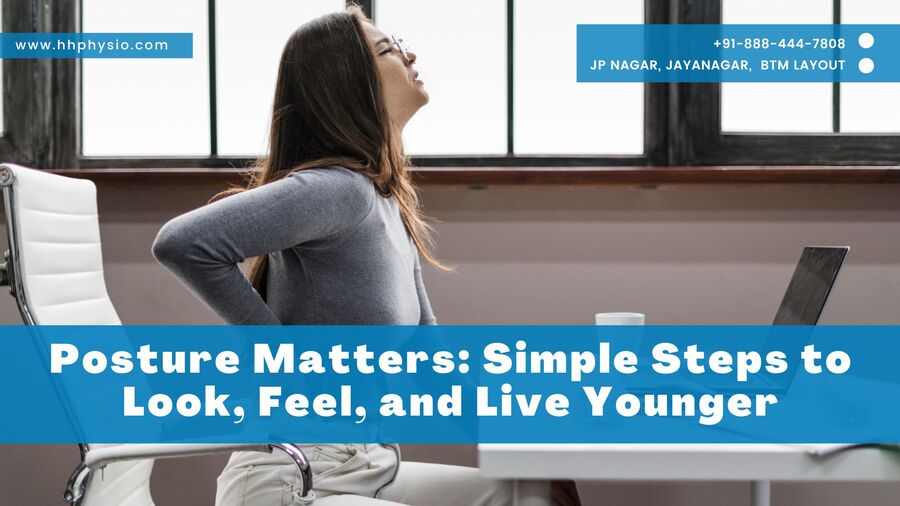Posture Matters: Simple Steps to Look, Feel, and Live Younger
Do you know what it feels like to stand with good posture? Our grandparents understood the importance of standing tall, and now science is confirming it. In an article titled “Slouch at Your Own Peril: Hunching at Work Leads to Hunching All the Time,” the Wall Street Journal discussed new research that highlights the significance of posture for our health and well-being.
As more of us spend long hours sitting at computers and using smartphones, our posture is suffering. When we sit, we often hunch over, folding our bodies in half. Texting and typing can cause our shoulders to roll inward, resulting in tight muscles in the back, neck, and chest. Over time, these habits, combined with the effects of gravity and muscle imbalances, can make us appear and feel older than we actually are.
If you spend your day with poor posture, experiencing back pain or shoulder and neck discomfort, it’s time to address it. First, let’s understand how to stand tall. Correcting your posture involves stretching tight muscles and strengthening neglected ones. It’s also about examining how you interact with your seated, standing, and sleeping environments.
Checking Your Posture
To see how your posture looks to others, take a photo of yourself while standing naturally from the front, back, and side.
Improving Your Posture
When many people try to “fix” their posture, they pull their shoulders back. However, this can lead to forward head position, often called “text-neck,” due to excessive texting and typing. Instead, focus on stabilizing your pelvis. Adjusting only your shoulders can worsen your body’s alignment.
Your body has learned to move the way you’ve trained it, so the challenge is to relearn what proper alignment feels like. Posture isn’t just about being straight; it’s about balance. It involves each part of your body – head, shoulders, belly, hips – working together to maintain stability.
Key Steps to Standing Taller
Stand Tall: Relax, lengthen your head towards the ceiling, and avoid stiffness.
Ground Your Feet: Shift your weight from toes to heels and roll your feet in and out. Press all four corners of your feet into the ground.
Center Your Pelvis: Arch your lower back, then tuck your pelvis under to find the center point while lengthening your spine.
Open Your Torso: Lift and roll your shoulders back while keeping your neck long and your head tall.
Level Your Head: Look straight ahead and slightly tuck your chin to keep your head level.
Practice these steps two or three times a day, focusing on each point. After a few weeks, you’ll feel lighter, and your chest will open up. Others will notice the difference too.
Improving Your Sitting Posture
Pay attention to your seated posture. Even an expensive ergonomic chair won’t help if it’s not adjusted correctly. Focus on the tilt of your pelvis, which is crucial. A slight forward tilt aligns your pelvis beneath your torso, promoting good mechanics in the lower back. Some chairs have adjustments for this, or you can use affordable seat supports. Backrests that you lean against may not provide long-term benefits and could keep your spine curved without engaging the necessary muscles to maintain good posture.
Posture often goes unnoticed but plays a vital role in your health. It’s time for a posture reality check. Start working on improving your posture with these steps, and you’ll stand and sit taller, look better, and feel younger
Also Read: Do not sit on your wallet
Share it with others…

